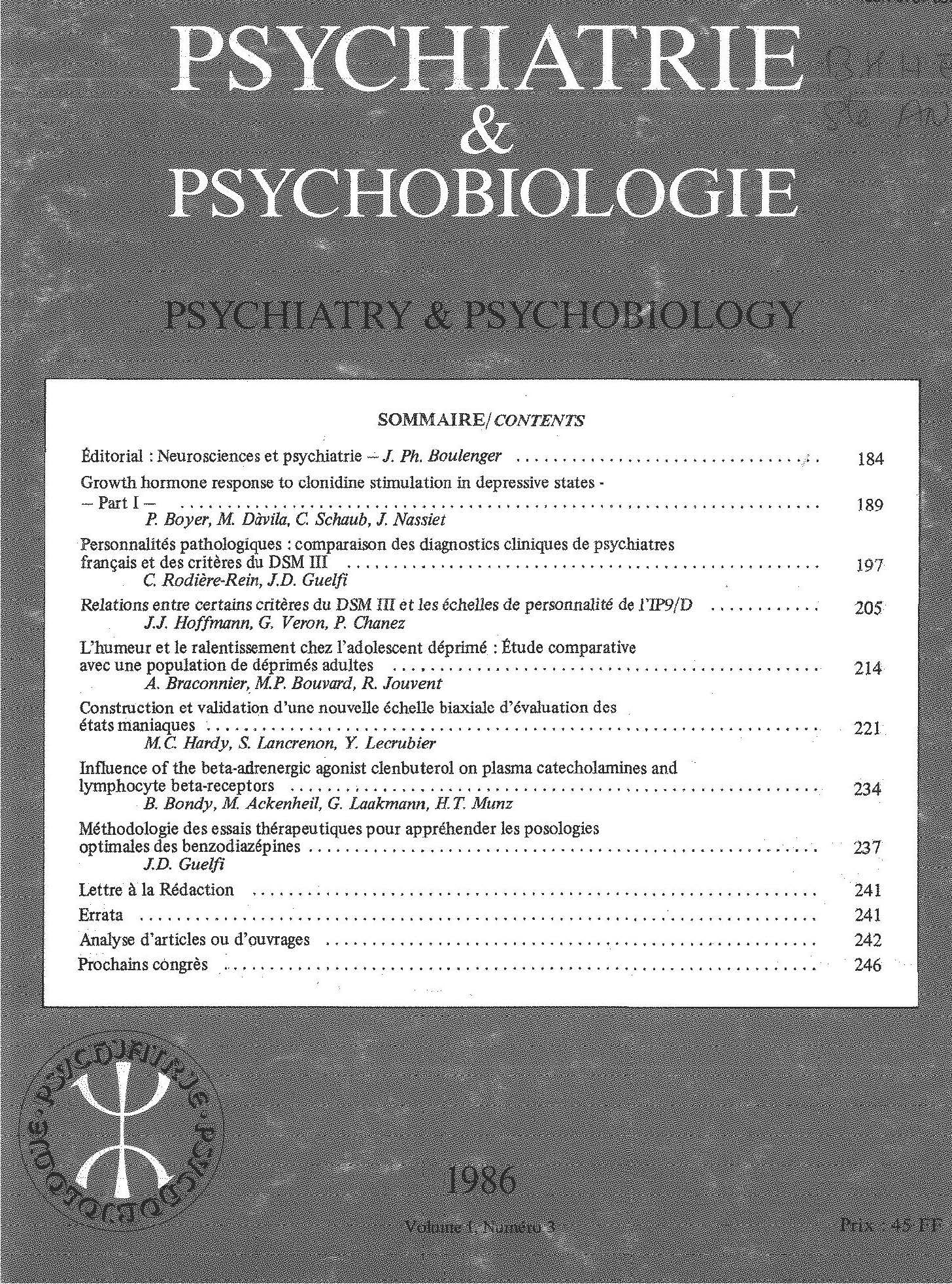Article contents
Multiple pharmacological mechanisms and clinical targets for neuroleptics: should a more operational classification be considered?
Published online by Cambridge University Press: 28 April 2020
Summary
The disinhibitory effect has long been described as a therapeutic property of some neuroleptic drugs (NL) able to improve negative symptoms.
In pharmacology behavioral models indicate a functional facilitation of dopaminergic transmission. Moreover, a group of negative symptoms very similar to those improved by disinhibitory NL may be induced as a side effect by other NL. Therefore the syndrome improved by these few NL could be linked to functional hypodopaminergic modifications. The improvement of negative symptoms by these few NL is linked in the Animal and in Man to the administration of low doses. We propose that these drugs be called “energizing neuroleptics”. Recent clinical studies have answered various important questions concerning this effect:
• patients with predominant negative or positive symptomatology do need different dosages of these NL;
• the low doses of these energizing NL are more effective for the treatment of negative symptoms than low doses of other NL;
• the energizing effect is not specific for schizophrenic patients, but can be shown if a negative syndrome is present. A subgroup of dysthymic patients could present a relatively pure hypodopaminergic syndrome. Even if anhedonic, these patients are not really depressed; we propose to call them psychasthenic.
The energizing effect presents an original mecanism of action and a target “transnosological” syndrome. The corresponding group of NL should appear in the classifications alongside sedative and antihallucinatory (or antiflorid) NL.
Résumé
L’effet déshinibiteur, c’est-à-dire l'amélioration de symptômes “négatifs” ou mieux déficitaires est une propriété décrite depuis longtemps pour certains neuroleptiques. Des modèles pharmacologiques comportementaux semblent montrer au plan fonctionnel une facilitation de la transmission dopaminergique dans certaines structures. Un groupe de symptômes déficitaires, identiques à ceux qui sont sensibles à cet effet, peut être induit comme effet secondaire des neuroleptiques type chlorpromazine. Il pourrait donc s’agir d'un syndrome “hypodopaminergique” fonctionnel quelles que soient les modifications dans les relations entre structures dopaminergiques qui le sous-tendent. Les études cliniques récentes permettent de préciser trois points concernant cet effet qu’il est proposé d'appeler antidéficitaire:
les schizophrènes présentant des symptomatologies productives ont besoin de posologies beaucoup plus élevées que ceux qui sont majoritairement déficitaires.
les faibles posologies des neuroleptiques antidéficitaires sont dans cette indication plus efficaces que les posologies d'autres neuroleptiques;
l'effet antidéficitaire ne se manifeste pas spécifiquement chez les schizophrènes mais de façon transnosologique, vis-à-vis d'un syndrome. Un sous-groupe de malades dysthymiques pourrait présenter ce syndrome hypodopaminergique de façon relativement pure. Le terme psychasthène définirait bien ces malades qui ne sont pas authentiquement déprimés.
L'effet antidéficitaire présente un mécanisme d'action original et un syndrome cible “transnosologique” et doit donc figurer comme un groupe à part entière aux côtés des propriétés sédatives et antiproductives dans les classifications correspondantes des substances neuroleptiques.
Keywords
- Type
- Research Article
- Information
- Copyright
- Copyright © European Psychiatric Association 1987
References
References/Bibliographie
- 6
- Cited by



Comments
No Comments have been published for this article.